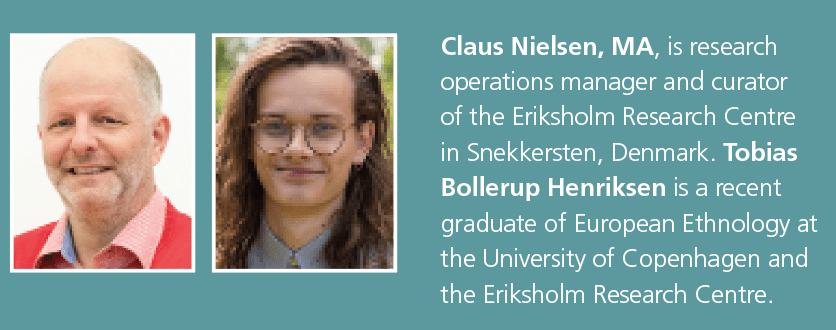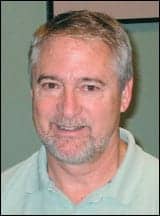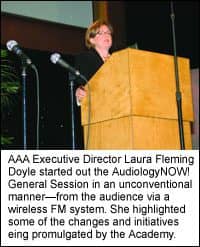Tech Topic | February 2022 Hearing Review
By Tobias Bollerup Henriksen and Claus Nielsen, MA
It takes two to tango. A lot has changed during 40 years of hearing aid evolution. However, the role of the hearing care professional—as interpreter, counselor, and hearing aid fitter—has remained a vital part of the process while evolving to encompass new technologies, from smartphones to teleaudiology.
This is the fifth article in a five-part series based on 40 years of research material from test participant files at Eriksholm Research Centre in Denmark. Previous articles in this series, have demonstrated how some side effects have changed and mostly disappeared with the technical evolution of hearing aids,1,2 how seemingly trivial sound experiences can significantly enhance a person’s well-being,3 and how users through the decades have come to consider hearing aids as an integral and vital contributor in their quality of life.4 Part 5 focuses on two themes: 1) The interaction between the hearing aid user and the hearing care professional (HCP), and 2) The ongoing changes between this dynamic partnership.
Going back 40 years, the role of the HCP was quite different compared to the current role. However, the role of the user has also changed. We will take a closer look at the changes for both roles during the past four decades. As a supplement to the comments from the test subjects presented in the previous articles,1-4 we also conducted interviews with colleagues at Oticon and Eriksholm who have performed clinical work through the years—work comparable to the tasks of the HCPs. These interviews have primarily been done to describe the HCP’s role in patient fitting and care. Specifically, we interviewed Carsten who has more than 40 years of experience, Dragan who has more than 30 years of experience, and Lena who has 5 years of experience fitting hearing aids.
The Interaction between the User and the Hearing Care Professional
A good hearing aid fitting is dependent on good communication between the user and the HCP. The user must be able to describe his/her experiences with the hearing aids, especially relative to the sound and ability of the device to enhance communication. At a minimum, the HCP must be able to listen and understand what the user is explaining and transform their comments into meaningful audiological decisions for adjusting the hearing aid.
“When you are fitting hearing aids, which I have done many times [for 40 years], the first thing you must do is to listen. So I do sit and talk an awful lot [during the fitting], but there is a reason why you have two ears and only one mouth. You must listen twice as much as you talk. Above all, you need to start by listening. If you do not listen first, then you do not know where you are, and you do not know what your starting point is for anything.” —Carsten
“It is difficult to put a new auditory experience into words, for example when answering the question, ‘How does it sound?’ Often the users might say it sounds very good, but when they come home it just sounds completely wrong. However, I do think in recent years it has become much easier as an audiologist due to the improvements in technology and sound quality.” —Lena
“So, you really must ask the person with hearing loss, ‘What do you want to achieve?’ Then it is my task to decide what technology the person needs. This is the kind of translator and clinician I want to be.” —Carsten
Carsten is focused on the important task of being able to listen, and Lena acknowledges the users’ challenge of being able to put into words what they experience. You could say that the HCP is the translator between the users’ wishes/needs and the capabilities of the hearing aid. This task has become easier according to Lena primarily because the prescription of amplification is much better today than in the past, while the signal processing and sound quality have improved along with fewer side effects like occlusion and feedback.
Sound is not as tangible and easily described as vision. Sound is invisible and often brief. So, the users must be able to describe what they hear. But how do they know what they don’t hear?
“How well do you really hear? This is really hard to explain because you do not know what you’re missing. So, you cannot tell other people what it is you do not hear.” — 2019, male, 59 years old
Explaining hearing and especially what is not heard is quite an abstract task that requires excellent communication between the hearing aid user and the HCP.
The Dynamic Partnership between the User and the Hearing Care Professional
In the mid-1970s, hearing aids underwent a change. Previously, there had been a tradition of using speech audiometry for the selection of a hearing device with relatively little guidance on actually fitting the hearing aids (eg, Carhart Method). This slowly changed due primarily to an influence from US researchers and clinicians that resulted in more refined audiological terms and concepts when fitting hearing aids.5 Some of the first ideas on fitting rationales were also born during these years.6
Hearing aids of the late-1970s and 1980s were linear devices with limited adjustment possibilities. These hearing aids usually had one to three controls (trimpots) which were adjusted by means of a screwdriver, and the modifications were based on relatively primitive (but pragmatic) fitting rules like the Lybarger Half-Gain Rule where gain for a hearing loss at a specific frequency was increased by a factor of 0.5. Later came more advanced fitting rationales like Libby’s 1/3 to 2/3 rule, NAL, Pascoe, Berger, Cox/MSU, POGO, and more.5 Some changes to the acoustic performance of the hearing aids were also accomplished by means of earmold alterations.7,8 Additionally, users could adjust the amplification of the hearing aid on the volume control, and some models also offered a telecoil program.
“When I first started working with hearing aids, they were still analog technology. These hearing aids typically had one to three trimmers. Thus, in that sense, it was very limited regarding how much you could adjust the hearing aid to the individual’s hearing loss.” —Dragan
So, for many years, HCP hearing aid parameter adjustments were fairly basic. Starting in the 1990s, digital programmable aids—followed by fully digital hearing aids with automatic gain control (AGC) and directional microphones—offered more possibilities. However, many users were still struggling to get the best solutions in multi-environmental listening situations.
“I know I have a difficult form of hearing loss and my hearing curve makes it complicated to adjust so I can hear in all frequencies, but there are so many options for settings in the digital devices and I therefore hope you can adjust them so it can get better for me. It’s wonderful that the hearing aids automatically turn up and down in noisy environments, and even though there is noise, I can mostly concentrate on talking to someone, even if I only hear half the words. The rest I guess, which often gets funny or embarrassing.” —2004, female, 69 years old
What defines the role of the HCP today? Clearly, it is no longer about knowing how to adjust a hearing aid with a screwdriver! However, the vital tasks of being an interpreter, aural rehabilitation specialist, and technical expert remain. Advanced digital fitting technology and the wide range of modern hearing aids (and implants) bring a whole new aspect to the role of the HCP.
One example is how Bluetooth and connectivity enable hearing aids to connect with other devices. This is done to make everyday communication easier. Connectivity and “If This Then That” (IFTTT) network capabilities9 also open new dimensions, but at the same time demand new requirements from the HCP.
“Then, of course, there is all that connectivity with hearing aids that must be able to work with mobile phones, and apps, and TV streamers, and all such things. In any case, some of what I do [for connectivity] takes more and more of the time in the hearing aid fitting visits than the actual setting of the sound and technical features in the hearing aids. Where I think it probably really stems from is the fact that the automation in hearing aids has gradually become so good at categorizing what kind of sound is around the person right now, and then just sort of adjusts the sound accordingly.” —Lena
“People with more severe hearing loss had trouble hearing on the phone, especially cell phones when they became more widely used. We’re pretty much getting past that problem now. Today, the users complain more about sometimes losing the wireless connection for various reasons. Then they ask, ‘How can I pair the phone with the devices again so I can take calls?” —Dragan.
Both Lena and Dragan talk of the double-edged sword of connectivity in hearing aids. In the best cases, connectivity really is a great addition to the lives of hearing aid users. However, it does present tasks in the adjustment process that are not in the traditional realm of the HCP. As such, HCPs (and users) are increasingly required to be able to know their way around a variety of smartphones when setting up wireless connectivity. This also requires the HCP and the hearing aid user to be able to communicate and understand each other and their respective roles.
“You must have a good understanding of the acoustics and how sound is related to what I do on the computer with the hearing aid fitting—and all the things related to this. That’s still at the core of what a hearing aid clinician should be able to do. But now this has been expanded to ‘You also need to be a mobile phone expert.’ So regardless of whether users come with a Samsung or Apple phone, you need to know what the menus look like and the settings on the phone model itself, where you can quickly find Bluetooth, which Bluetooth version it uses, and there are times when you do have to go in and look things up on the Internet [to see if the devices are compatible]…So, many more technical things have been added. It has become a little more complex.” —Lena
Connectivity also challenges the idea of the hearing aid as an “aid.” According to Dragan, the advanced capabilities of modern hearing aids make them much more like an open communication system.
“Because hearing aids have gotten better and feature connectivity, it’s not just a hearing aid you buy now; rather, it’s a hearing system you acquire. And, in that way, you could say you’re acquiring something that is really quite a bit more advanced and smarter than an ‘aid.’”’ —Dragan
These smart and advanced features have changed users’ everyday lifestyles. We have gone from a dedicated hearing aid to an advanced communication device. However, these changes and increasingly complex features also require new knowledge and skill sets (and often patience!) from the HCP. The challenge of describing the perceived sound has remained unchanged for many years, but the user also needs to understand more about the different hearing aid features in order to benefit maximally from them.
Finally, during the past 2-3 years, the capability for online fitting sessions via teleaudiology has also become widely available. The user downloads an app and the HCPs are then able to make remote adjustments of the hearing aid via a cloud service. In this way, it’s almost guaranteed that the HCP-user partnership will continue to evolve and become even more dynamic in the years to come.

Correspondence can be addressed to Claus Nielsen at: [email protected].
Citation for this article: Nielsen C, Henriksen TB. 40 years of consumer comments: Interactions between users and the hearing care professionals. Hearing Review. 2022;29(2):10-11.
References
- Nielsen C, Henriksen TB. 40 years of sound processing as described by hearing aid users. Hearing Review. 2021;28(6):12-13.
- Nielsen C, Henriksen TB. The ‘good life’: What 40 years of consumer comments suggest about hearing aid use. Hearing Review. 2021;28(9):28-31.
- Nielsen C, Henriksen TB. 40 years of consumer comments: Making hearing aid feedback and occlusion past history. Hearing Review. 2021;28(11):28-30.
- Henriksen TB, Nielsen C. 40 years of consumer comments: Will hearing aids become an integral part of our bodies? Hearing Review. 2022;29(1):14-15.
- Nielsen C. Samspillet mellem hørenedsættelse og høreapparater set i et historisk perspektiv. In: Særnummer, Handicaphistorisk Tidsskrift. Dansk Psykologisk Forlag. http://www.handicaphistorien.dk/upl/website/handicaphistorisk-tidsskrift-dowload/HT19srnummer.pdf. Published February 21, 1986.
- Hawkins DB. A historical perspective on hearing aid selection. Hearing Review. 1994;1(10):9- 12.
- Pirzanski C. Earmolds and hearing aid shells: A tutorial, Part 4: BTE styles, materials, and acoustic modifications. Hearing Review. 2006;13(9):20-28.
- Mynders JM. Essentials of hearing aid selection, Part 2: It’s in the numbers. Hearing Review. 2003;10(12):16-20.
- Beck DL, Nelson T, Porsbo M. Connecting smart hearing aids to the internet via IFTTT. Hearing Review. 2017;24(2):36-37.





